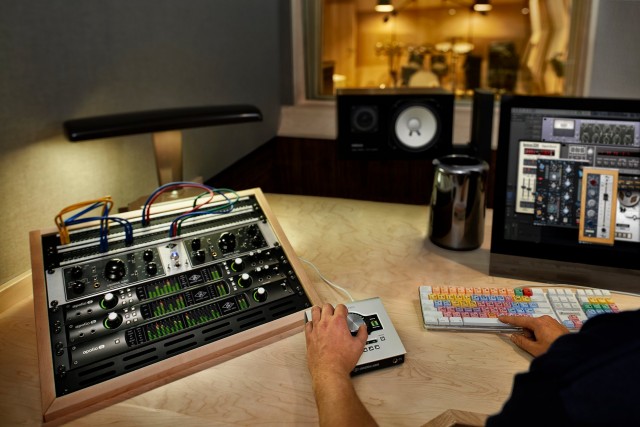For me, Apollo is what changed the value equation and appeal of Universal Audio.
Suddenly, we weren’t talking about buying hardware just to run some nice effects – which, good as those effects were, limited the audience for the UAD. With Apollo, the hardware splurge made sense. It was simply one of the better audio interfaces you could buy for production work, even before instantiating a single plug-in.
And then you could add the UAD plug-ins. For anyone who said that they weren’t interested in running effects on dedicated DSP hardware, the Apollo is an answer. Fine. Here’s a reason to run on DSP: add those effects in real time, as you play or track.
Last month, UA refreshed that whole audio interface line. And they continue the steady stream of plug-ins, many recreating historical instruments.
The new Apollo, clad in black, isn’t a revolutionary update, though one reason that’s fair to say is that the existing Apollo is pretty darned good.
The latest announcements should bust up one myth, as well. UA isn’t only catering to Mac fans with the latest machines, by way of Thunderbolt. The existing FireWire-based devices continue to run just fine, thank you, and the latest generation even gets a new FireWire update. That’s good news for anyone using Windows, or even an older, pre-Thunderbolt Mac.
First, let’s have a look at what’s new on Apollo.
Conversion. Updated A/D and D/A, for those who care, continue to put UA on a very short list of the best audio interfaces out there. I think what they had was already really good from a sound standpoint, so this is not so relevant to existing owners, but does mean you get a bit of a bonus if you’re buying new now.
Real-time processing. UAD-2 DSP lets you record through a whole lot of the catalog – including Lexicon and Ampex – at near-zero latencies. And this, frankly, is fantastic. It even means using a UAD live is a very valid possibility.
Chaining. Here’s one reason to consider using Thunderbolt: cascading. You can get 4 Apollos or 6 UADs together over Thunderbolt. That’s primarily of use in the studio – or if you have a UA-owning friend – but welcome, at least.
Your options are spendy as always, but delivering a fairly robust investment – now with more convenient monitoring (alt speakers, etc.) on the front panel:
Apollo 8 with four mic pres; US$1999 DUO or $2499 with QUAD processing.
Apollo 8p with eight mic pres/Hi-Z. US$2999 with QUAD.
Apollo 16 (now this sounds like a moon mission) with 16 x 16 connectivity.
Apollo FireWire: $1999 with QUAD makes this actually a great buy for Windows users. And it gives you basically all the Thunderbolt models do, minus chaining. If you have a Mac with Thunderbolt, skip this, but if you don’t, it means you aren’t by any means left out.
You get a half-decent selection of what UA makes with the interface – as you’d hope, at that price – with 610-B Tube Preamp & EQ, Softube Amp Room, legacy LA-2A, 1176, and Fairchild compressors, and the all-important Pultec EQs.
But of course, if you’re only looking for an audio interface, you probably won’t get an Apollo – this is all about investing in a particular software platform.
That’s where there’s continued development. UA is still mainly focused on recreating historical models. As I wrote last month, we’re seeing the first-ever official Marshall amp simulation.
Now, with the latest software update, we get two more additions to their growing library. There’s an officially-endorsed Tube-Tech compressor, the CL-1B. And there’s a model of the Neve 88 Series, which brings you large console mixing.
The funny thing about all of this is, I think it’s increasingly appealing to producers – especially for Mac users with the portability of the Apollo Twin. (The Twin is the first UA box I would ever have considered taking with me on the road; it’s now my main live audio interface.)
That thought is obviously occurring to Universal Audio. Armin van Buuren turned up at Musikmesse and in a recent interview (penned by none other than a writer I met through Keyboard, Michael Gallant). Not my taste, musically, but I agree with everything he says in the review. Also interesting to note that he’s moving channel strips between machines using that functionality in Logic Pro X.
Have a look at the new stuff:
It’s not cheap, of course, but at least the Apollo Twin (I’d recommend the DUO) lowers the bar to entry – you can get a pretty terrific Mac laptop and this for less than the price of a good single studio machine a few years back, budget for a few pieces of software, and have a very reasonable and complete studio without breaking the bank.
We’ll get to look a little more at what they’re doing with software soon.



